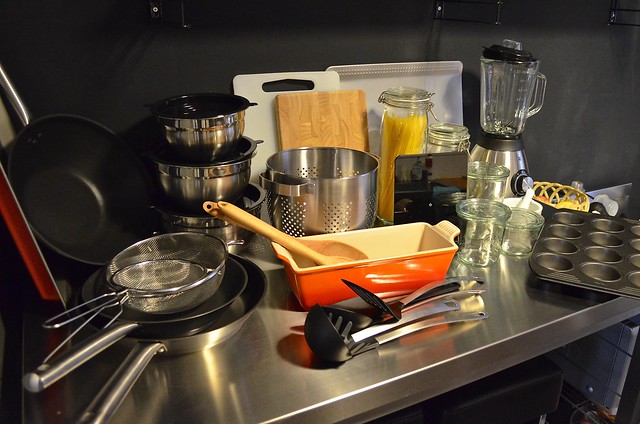 |
After some big moping - and probably a bit too much retail therapy - following my celiac diagnosis, I realized it was time for the self-pity to stop and the repairing of my body to start. After all these years of feeling foggy, bloated and just off, I finally had an answer, and a clear path of how to make it all better. I just had to get on the gluten-free train and stay there. The more I poked around on the internet, the more amazing-looking recipes I found, even for some of my favorite baked goods like cupcakes and banana bread. I was shocked. I could still bake without wheat flour? Who knew that flour also came from rice, corn, buckwheat, millet, sorghum and coconut? I sure didn't. I knew then that all was not lost and was convinced after tasting a few winning recipes that I would not feel deprived by what I did get to eat. A whole new world of cooking opened up to me and I'm diving into it, head-first.
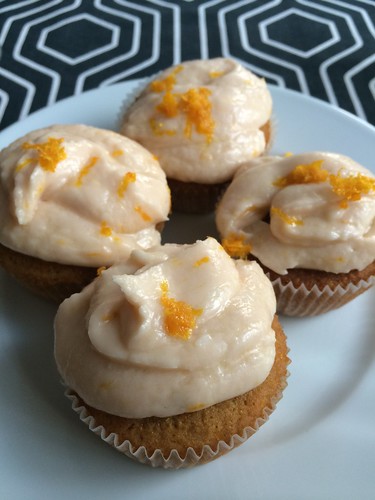 |
 |
Before I could even think about cooking, which frankly, was the only way I was going to be able to eat, we had to completely gut our kitchen and pantry. Apparently gluten for celiacs is a bit like peanuts for those with peanut allergies - even a microscopic amount can have disastrous consequences. While gluten doesn't always have the instantaneous and obvious response of peanut allergy sufferers, it can leave one sick for days with stomach flu-like symptoms, not to mention backtrack intestinal recovery in a significant way. After this disease has already driven me to the point of hospitalization and weekly iron infusions, I was not going to take any chances.
With my husband on board with making our home a 100% gluten-free zone and eating gluten-free with me, we set to work. Every kitchen cabinet was opened, sorted and cleaned. The oven was sprayed with heavy-duty cleaner and meticulously scrubbed no less than four times. All wood, plastic, bakeware and essentially anything that could contain traces of gluten went in the 'must go' pile. We even had to take the wood top off my high work table, as it had seen many a flour-covered day of cookie dough rolling, tortilla pressing and baked good mixing. Sticky gluten makes the best of friends with porous wood.
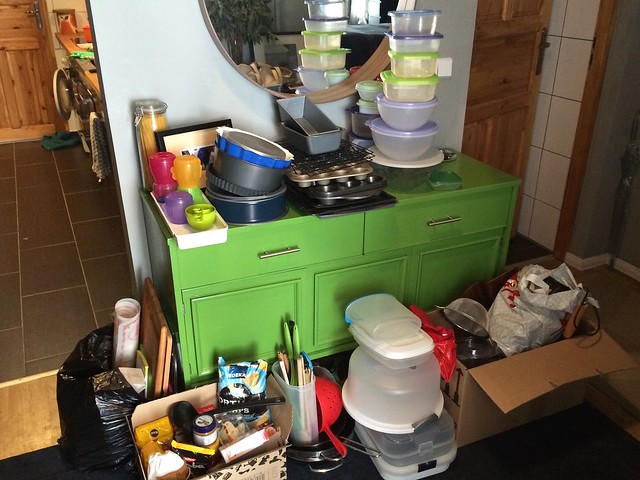
Letting go of my ample cake and muffin tin collection was easy compared to what was next: the pantry. Everything came out so that the pantry could be scrubbed down as well, but it was the review of every single item with a fine-tooth comb that was most exhausting. Here I thought deciphering processed food labels with their plethora of unpronounceable words was hard, doing it German felt like my head might explode. Anything that made the cut, we wiped down and put in a pile to go back in the pantry. Gluten-containing foods (I'm still mourning the loss of my beloved jars of speculoos...) went either in the trash or the giveaway pile. The questionable ones, of which there were many, went into a bag to be researched. Some of the offending foods were not all that surprising - corn chips and corn four that stated they 'can contain gluten', often from cross-contamination in the growing or processing stages - but there were some, like a jar of nutmeg, that contained a stabilizer that is on the verboten list and had to replaced with a purer form from the bio store.
We do a lot more shopping at the bio store now for the products filled with fewer additives and other gluten-offenders, meaning that unfortunately it is quite a bit more expensive to be a celiac. I like to think that our lack of eating out helps balance this out, but I'm not sure that's always the case. When I really think about it though, isn't this how we always should have been eating? Fewer cheap additives and more actual nutrition? The body is a temple, as they say, and why hadn't we been treating ours as such? Because it's cheaper? Easier? Probably a bit of both, but now my health was raging against the machine that is modern processed food, so I had no choice but to listen.
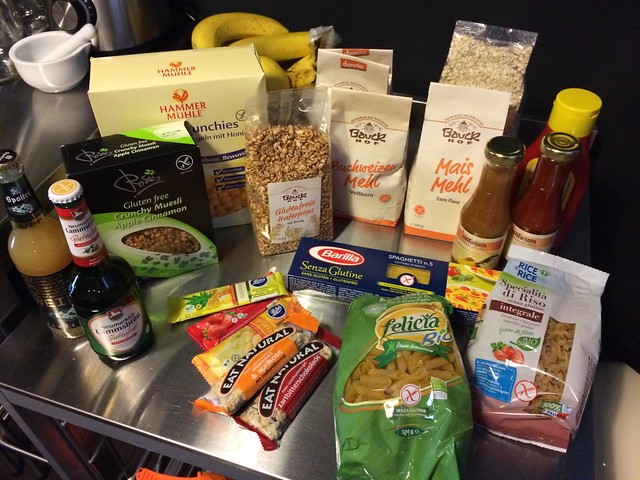
I was able to take solace in the new ingredients I was discovering and the new recipes I was trying. Ordering harder-to-find flours and processed foods* - let's be honest, there is still a place for cereal, pasta and the occasional cracker in my life - felt a bit like a treat rather than a punishment. Food that I had neglected to dabble in, like polenta, were brought into my new kitchen with gratifying results.
I mean, does this look like I'm not enjoying what I eat?:
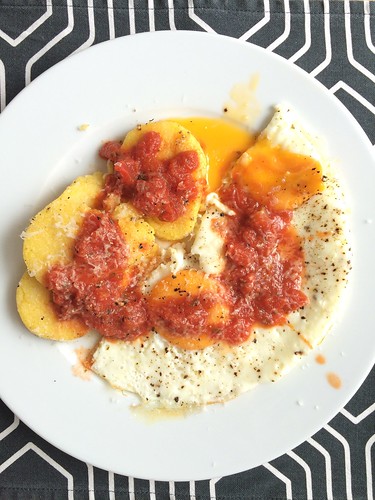 |
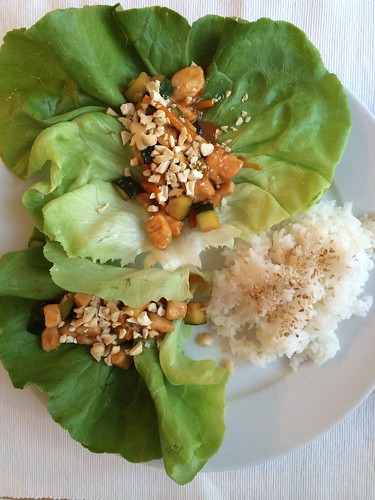 |
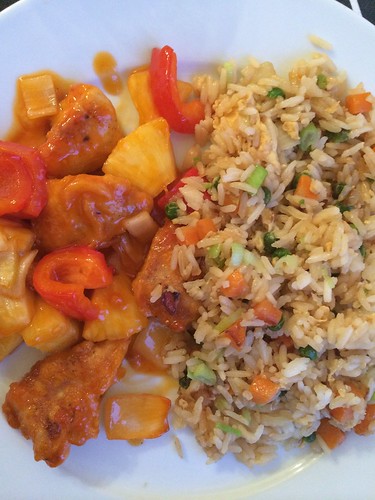 |
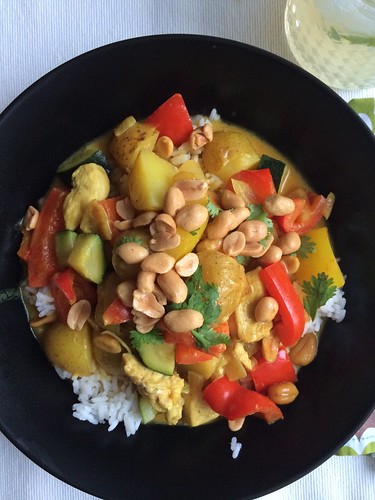 |
Even more satisfying was when I examined some of my go-to recipes and realized, hey, these are naturally gluten-free! Favorites like homemade Chinese food (made with new, GF soy sauce) and chicken curry could stay in our regular rotation. These little victories have helped make the transition to living gluten-free not only bearable, but delicious and free of feelings of deprivation. Now, when I pass the smells emanating from a bakery, that's another story...
For reference, here are a few resources I found helpful after being diagnosed and having to transition my diet and kitchen:
• Gluten-Free Goddess: How To Go Gluten-free
• Gluten-Free Girl: New to Gluten-Free?
• Equipping Your Gluten-Free Kitchen - What to Replace
• University of Chicago Celiac Disease Center Jump Start Your Gluten-Free Diet eBook
* A note on the alcohol-free, gluten-free beer pictured here: it contains barley malt. Alcohol companies claim that distilling grain alcohols rids it of gluten, but many celiacs have a reaction to any grain alcohols, distilled or not. I got sick from drinking this beer, so it taught me that only personal experience can determine what is actually safe for me to consume.

I'm glad to see you're enjoying discovering gluten-free foods and recipes. Much like my veganism, there are plenty of ways to eat what you want to eat and have it taste good, though sometimes that means it costs a little more and you find yourself making food more than eating out. Looks like a fun adventure though, and you're lucky your husband is eating in solidarity with you. Hope you're already on your way to feeling better.
ReplyDeleteThanks, Natalye! It really is a misnomer that diets that are limited by something - be it gluten or animal products - have to be lacking in flavor and enjoyment. The eating out part is difficult, but I'm making sure I enjoy what I do get to eat. There's too much good food out there not to!
DeleteHi, I saw this week a commercial on TV and immediately thought of you. Do you know the products of "Schaer" ? I don't know if they're any good, but here is the link to their homepage: http://www.schaer.com/
ReplyDeleteIts entirely in German, but they have over 700 recipes and also products you can buy. Perhaps this is something for you. Take Care!
You are so sweet for thinking of me! Schär is a staple in the German celiac's diet - often it's the only brand of gluten-free products a store will sell here. Like so many GF processed foods, it's mostly just OK, but a few of the breads are actually pretty good. While it lacked that perfectly crispy, flakey crust, its baguette was really like eating a wheat-based baguette and just as tasty.
Delete